Grab Bag #028
San Francisco History Guy goes all stream-of-consciousness on the Broadway tunnel, buried ships, and petting parties in alleys.
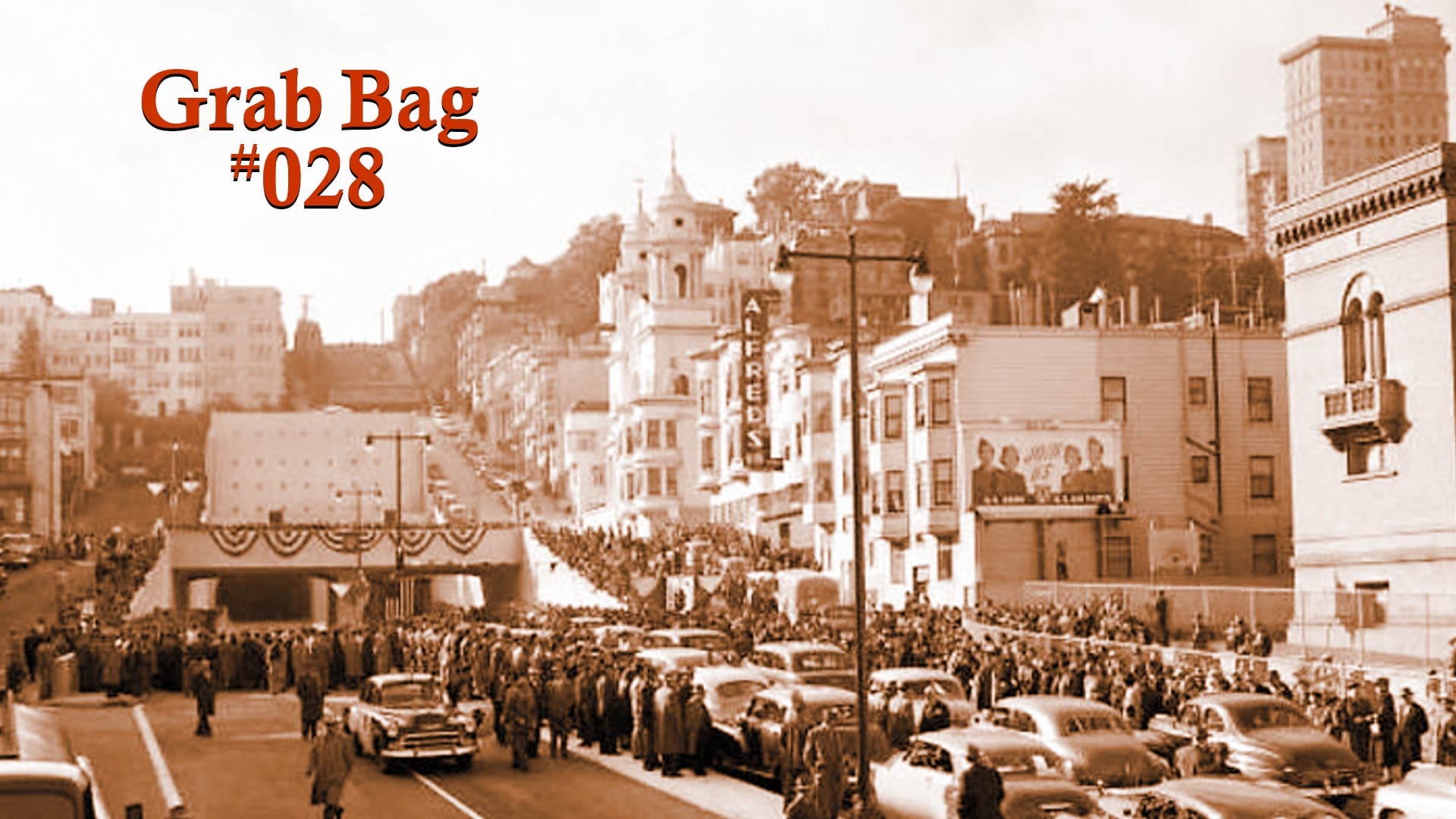
It takes a history guy to bore his wife praising the convenience of a street tunnel made 75 years ago, but that’s what I heard myself doing as we hit the Broadway tunnel on New Year’s Day.

Nancy and I took a walk along the Embarcadero, around the Ferry Building, through Salesforce Park (which feels like a Star Trek set to me), and had lunch at the mostly empty Old Ship Saloon on Pacific Avenue.
So, it wasn’t all about old tunnels.
But I particularly appreciate the Broadway Tunnel’s connection from Cow Hollow and the Van Ness corridor to Chinatown and North Beach. Because you know crossing Russian Hill is no joke. Some of the streets dead-end while others greatly narrow once you hit Larkin Street.
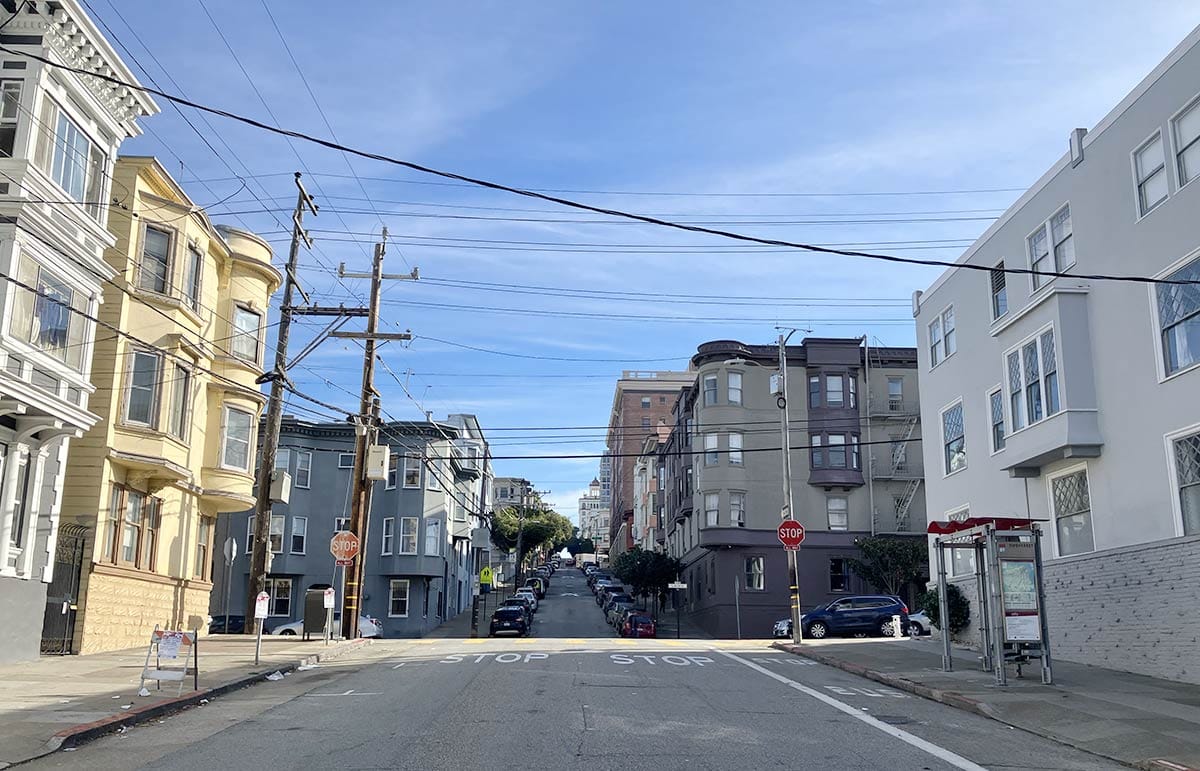
Another history guy observation: that narrowing is a cool sign you’re entering old San Francisco. Larkin Street was the western boundary on the city’s first official map of 1850.
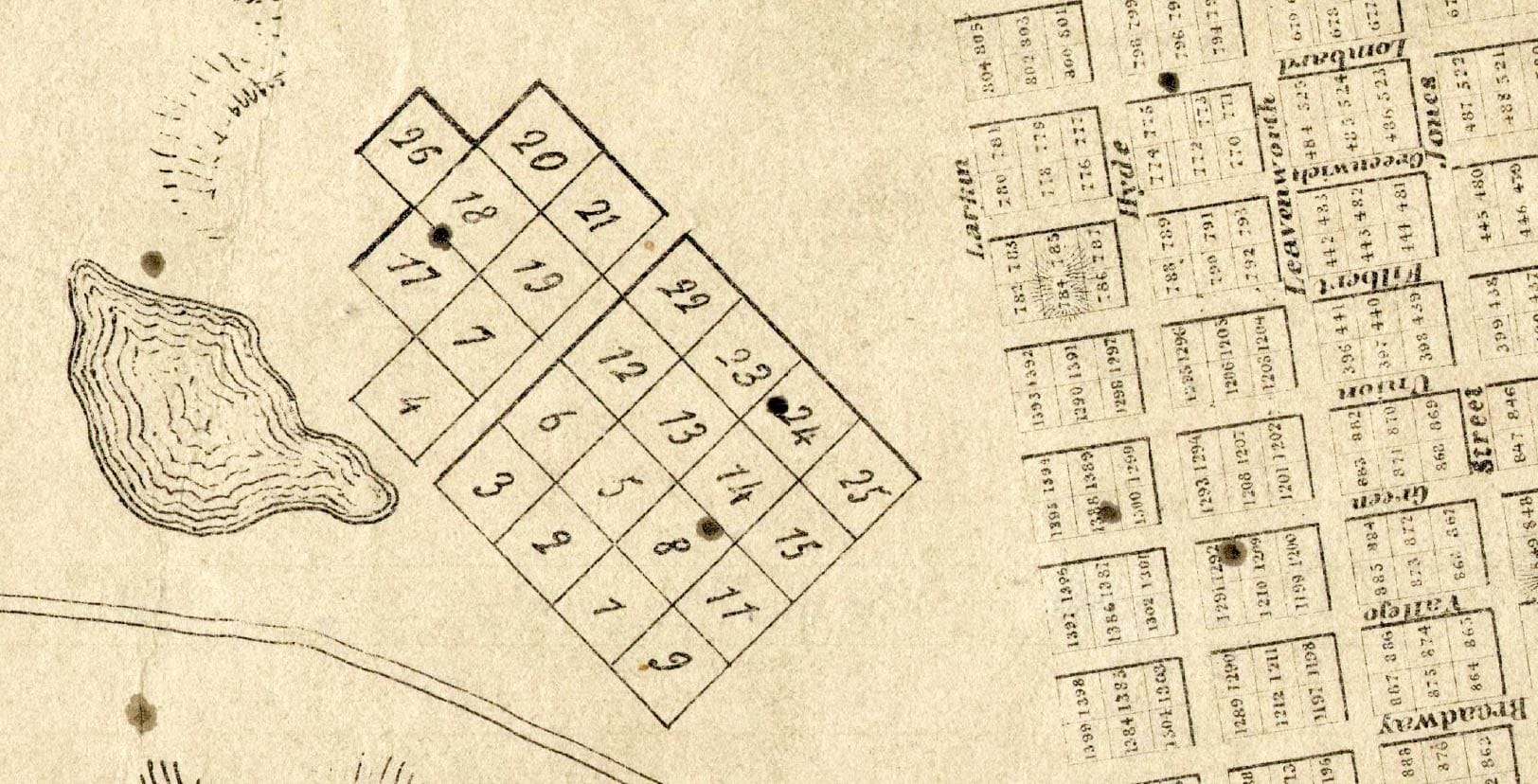
Once San Francisco began to expand, the surveyors wised up that their avenues should be more capacious. Or at least the streets of the old and new maps didn’t line up precisely. Walk along Larkin between Pacific Ave and Sacramento Street, looking both ways at each intersection, and you’ll pick up on what I mean.
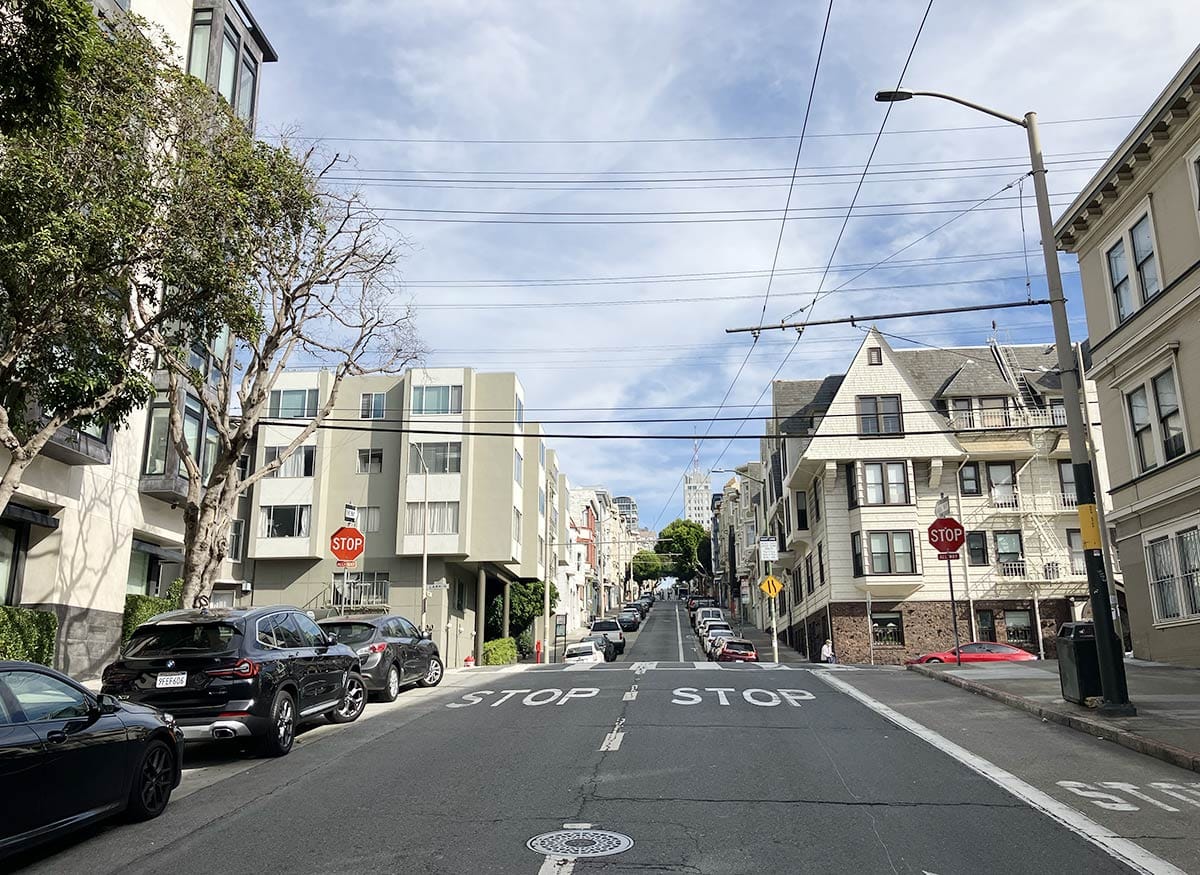
See how hard it is for Nancy to hang out with me for too long at a time?
Back to tunnels… As a hilly city on a peninsula, San Francisco has always been a dartboard for bridge and tunnel proposals, particularly in the early 20th century. Big-dream politicians, neighborhood boosters, and capitalists hungry for government contracts wanted to attach every bayside point and dig under every molehill. Here’s a typical proposal from 1911 to put Fillmore Street under Pacific Heights from Bush to Filbert streets.
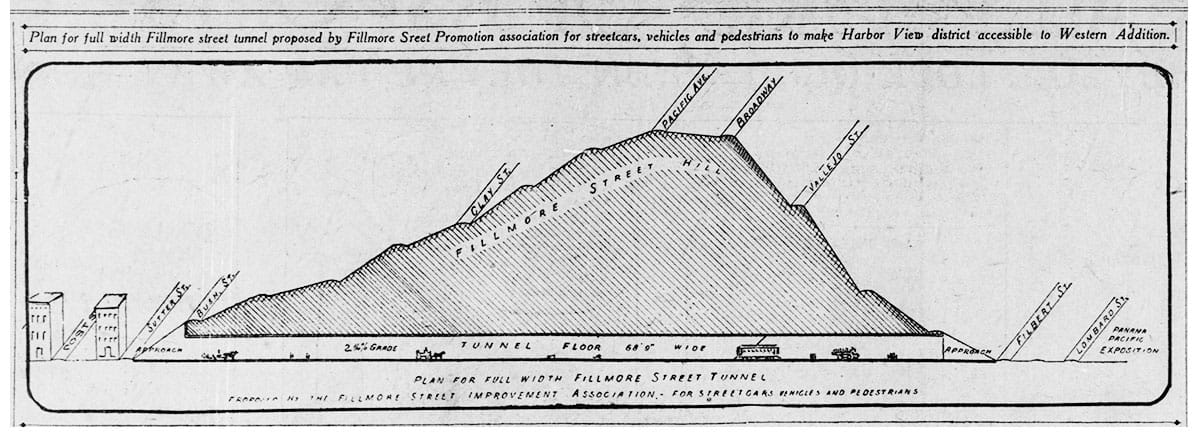
Some of these projects came to fruition and in remarkably quick order. The Stockton Tunnel was created over just 16 months in 1913-1914.
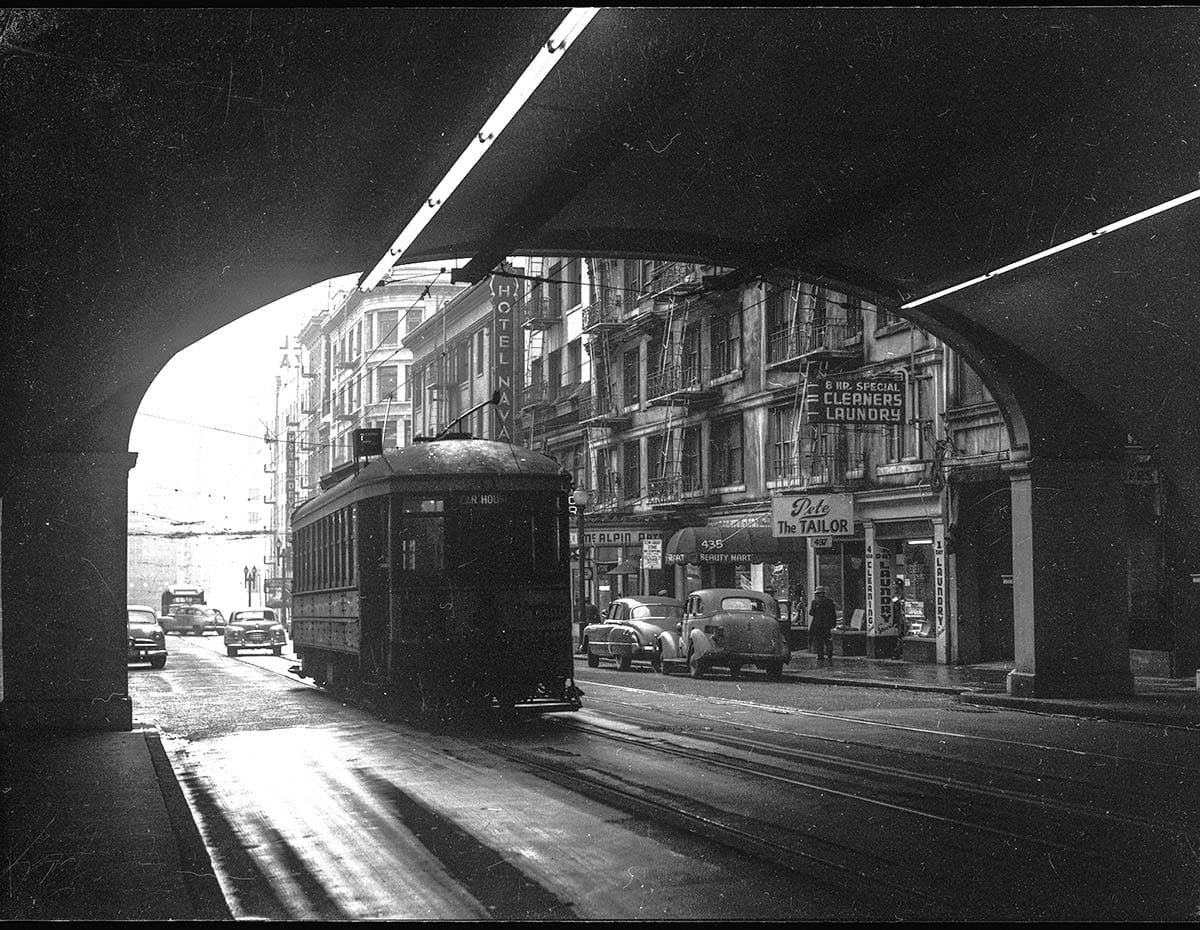
Yes, a streetcar line used to run through the tunnel. Now we have a tunnel below the tunnel for the Central Subway, which took a bit more than 16 months to construct, as in 12 years (!).
For those who aren’t Friends of Woody (yet), I wrote a little in the San Francisco Story Annual 2023 about the Stockton Tunnel area in connection with my discovering Dashiell Hammett:
“The setting where Miles Archer is shot [in The Maltese Falcon] baffled me. I couldn’t figure out how a hillside and a fence existed on Bush and Stockton Street because to 18-year-old me the world I knew had existed forever. The Stockton Tunnel had been carved by the gods. Ancients had erected the high wall of buildings running from its portal to Sutter Street. I was too young to know about change. That a streetcar once ran through the tunnel amazed and excited me. I had always been interested in the past, in history, but until Hammett didn’t consider that my own city could have one.”
Back to the Old Ship Saloon (remember paragraph 2?), I often wonder about the bar’s historical claim to fame. That Gold Rush era ships were turned into stores and bars and became early tourist oddities is part and parcel of San Francisco’s origin story:
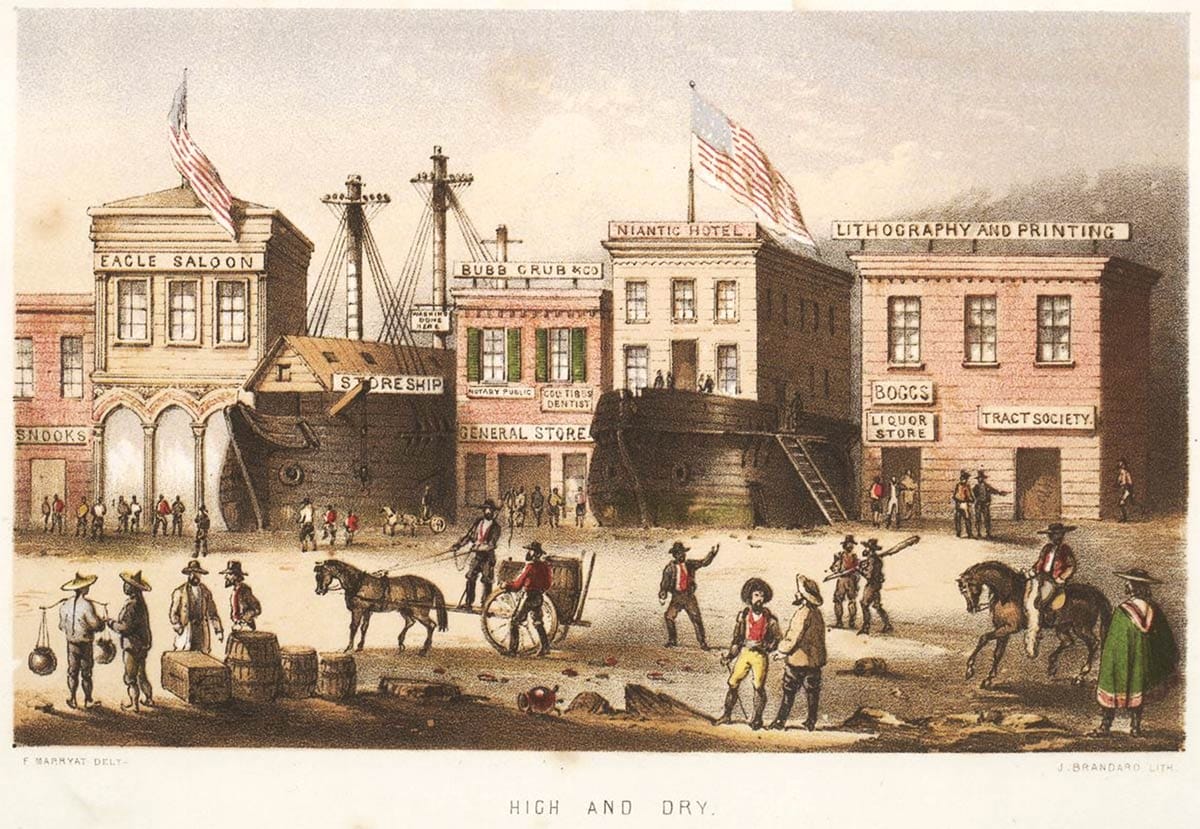
That many ships’ hulls lie beneath the financial district, blocks inland from today’s waterfront edge, is also fun city history:
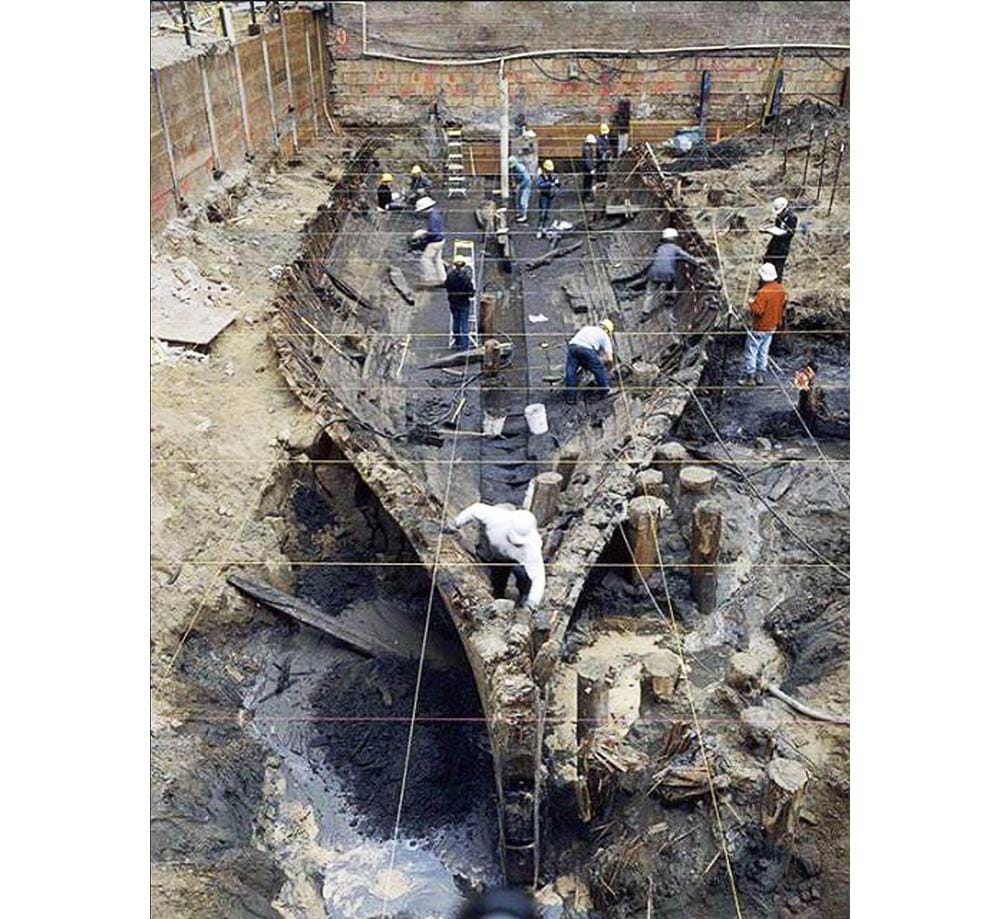
But is there anything maritime remaining under the saloon’s brick building? Are we just celebrating the whole story of landlocked vessels entrepreneurially repurposed? (Not that that isn’t a great job for a bar.)
Wikipedia says yes. Someone get me an archeologist.

Back to the Broadway Tunnel…
Once you emerge from the eastern portal there’s a sense you have entered a new world, which is when tunnels are most fun. Polk Street looks a lot different than Stockton Street. It’s a transporter experience. The vista opens up and you get one of the best views of Pasquale’s Tower (read more about this crazy thing). The hills are behind you and you have a straight shot to the water.
By the way, that clean path is thanks to some 1860s open-face carving of a former arm of Telegraph Hill:
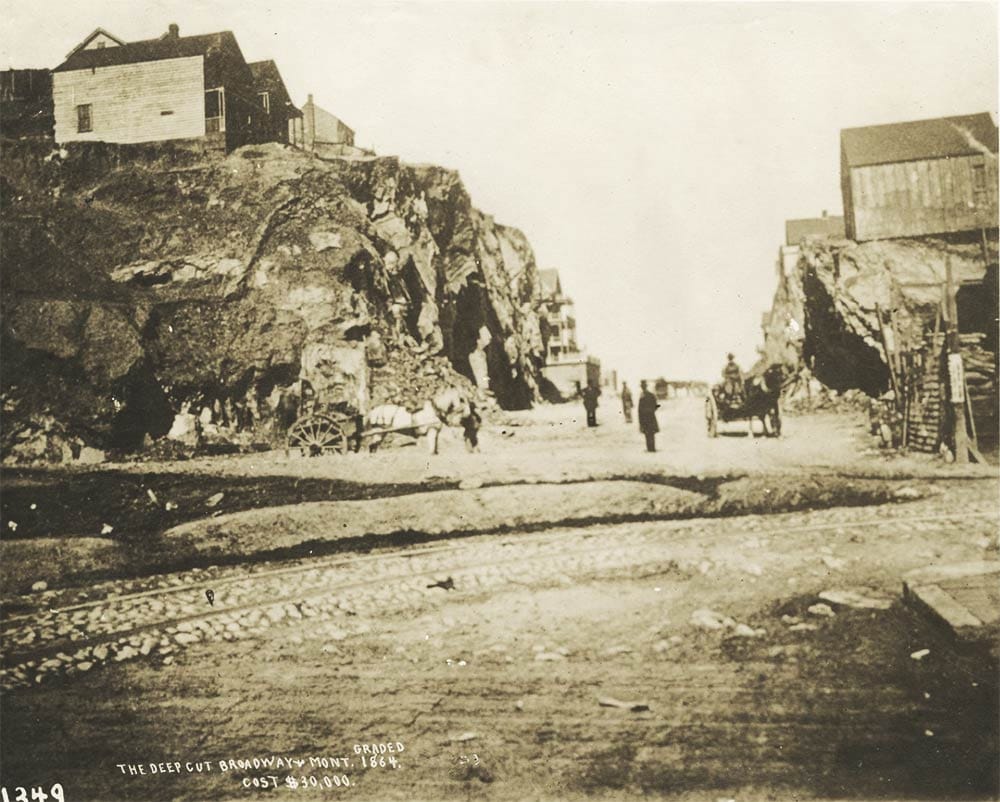
Are we still too young to know about change?
Back to that proposed Fillmore Street tunnel for a sec… The drop of Fillmore Street to the Marina was my father’s detour of choice as a treat to us kids. We sometimes wound down the crooked brick path of Lombard, but preferred the steep grade, views, and sense of vertiginous danger on Fillmore. As with the streetcar that once plied the Stockton Tunnel, I had no idea there used to be an unusual cable car line on the Fillmore Hill:
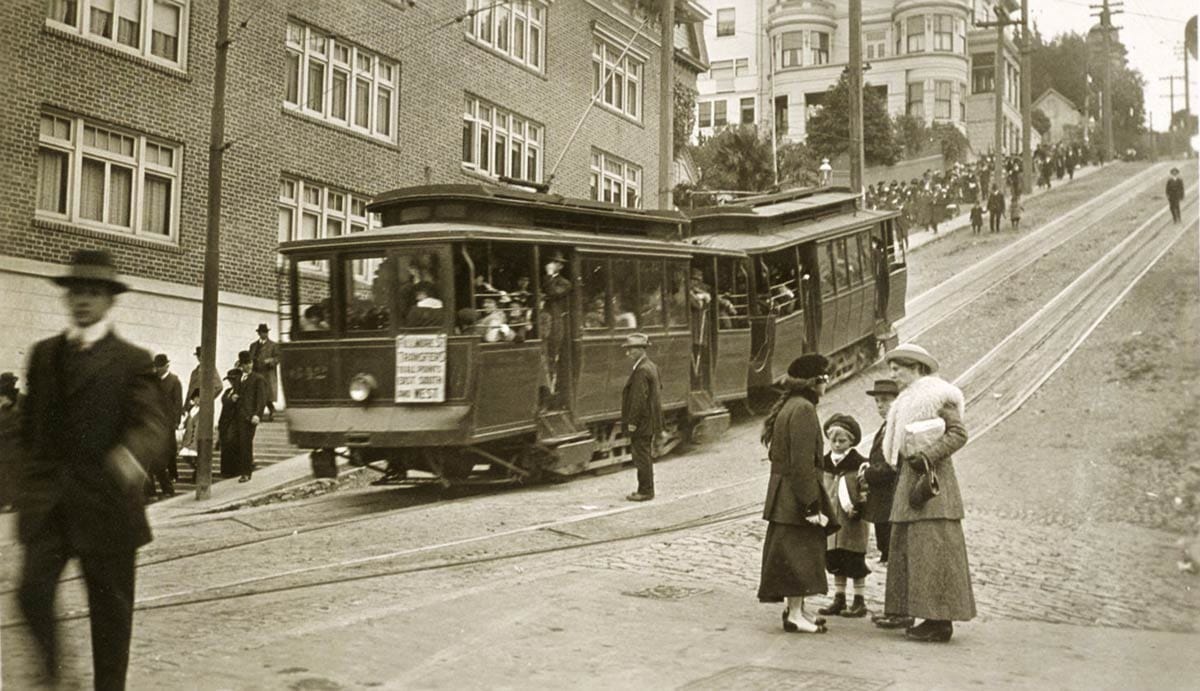
What made it unusual? Rather than powered by an ever-moving underground cable, the Fillmore line was a counterbalance arrangement with cars connected to each other. The weight of the car headed downhill lifted the uphill-bound passengers.
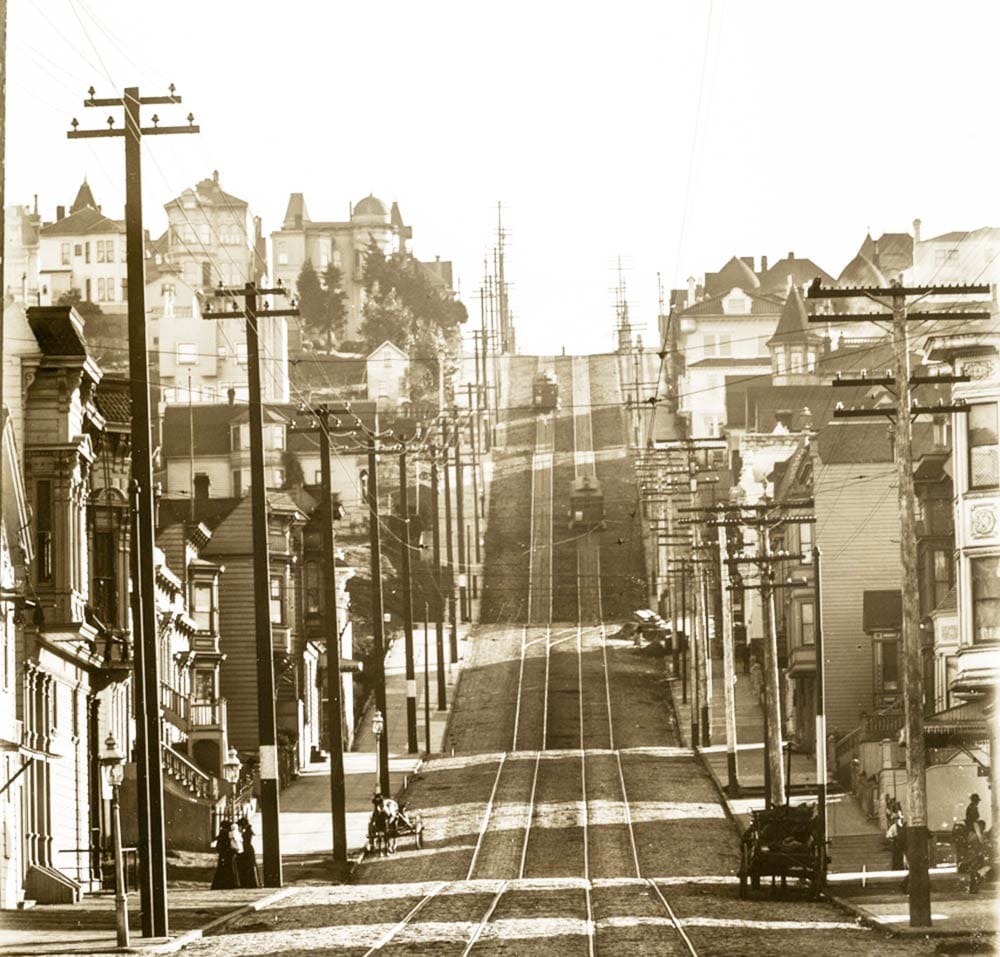
Would this be a primo tourist attraction today? Yes, it would.
Back to the Broadway tunnel… Earnest plans for such a thing through Russian Hill began as early as 1874:
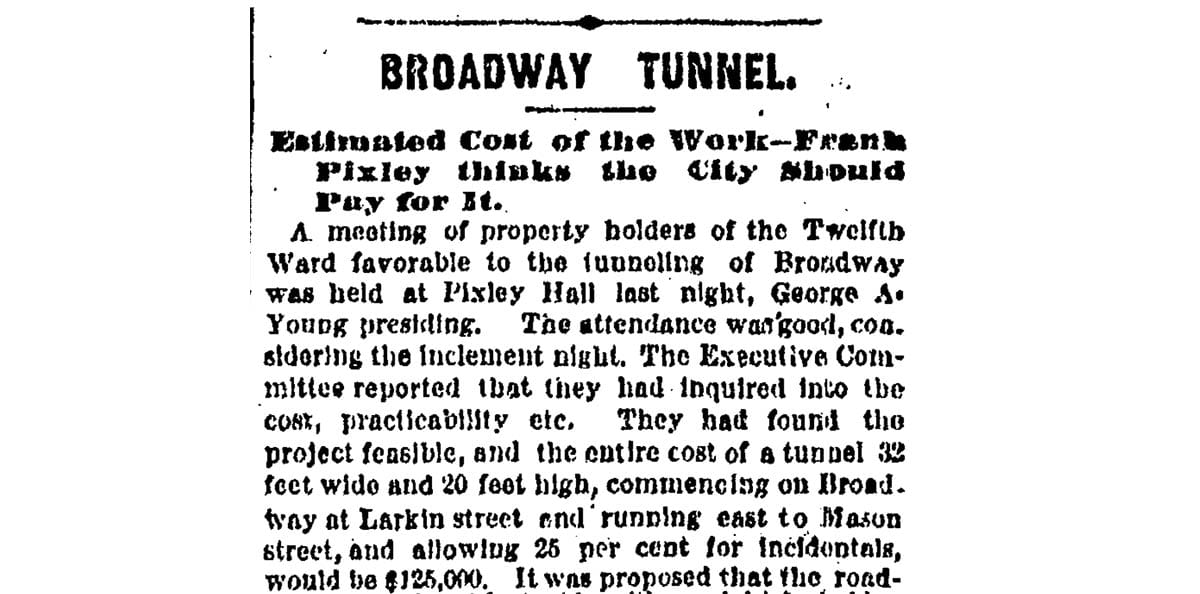
The job didn’t get started until 1949. I’m sure there was some opposition. I’m curious how many buildings were demolished or moved for its creation. I hope a better job was done than by these guys trying to move a house in 1928:
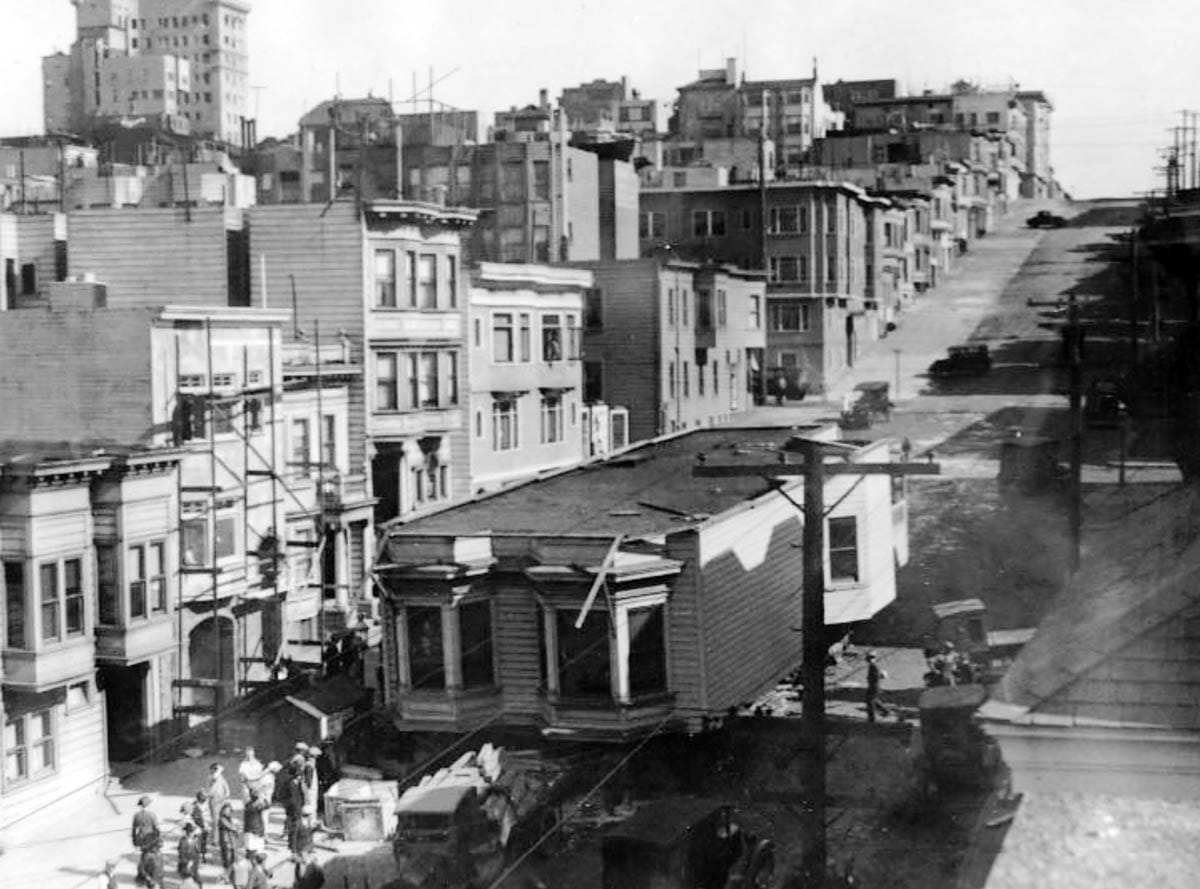
This was the same block where the western portal of the tunnel would eventually go. No idea where the building started or ended up after this. Start searching, folks, and let me know.
Big infrastructure projects can do big, bad things to a neighborhood and I’m sure many Russian Hill denizens were against the tunnel dig. No one likes a mini-freeway going past or under their house. But thinking about the area around Hyde and Broadway made me remember the story I once stumbled upon about a nearby alley, Lynch Street:
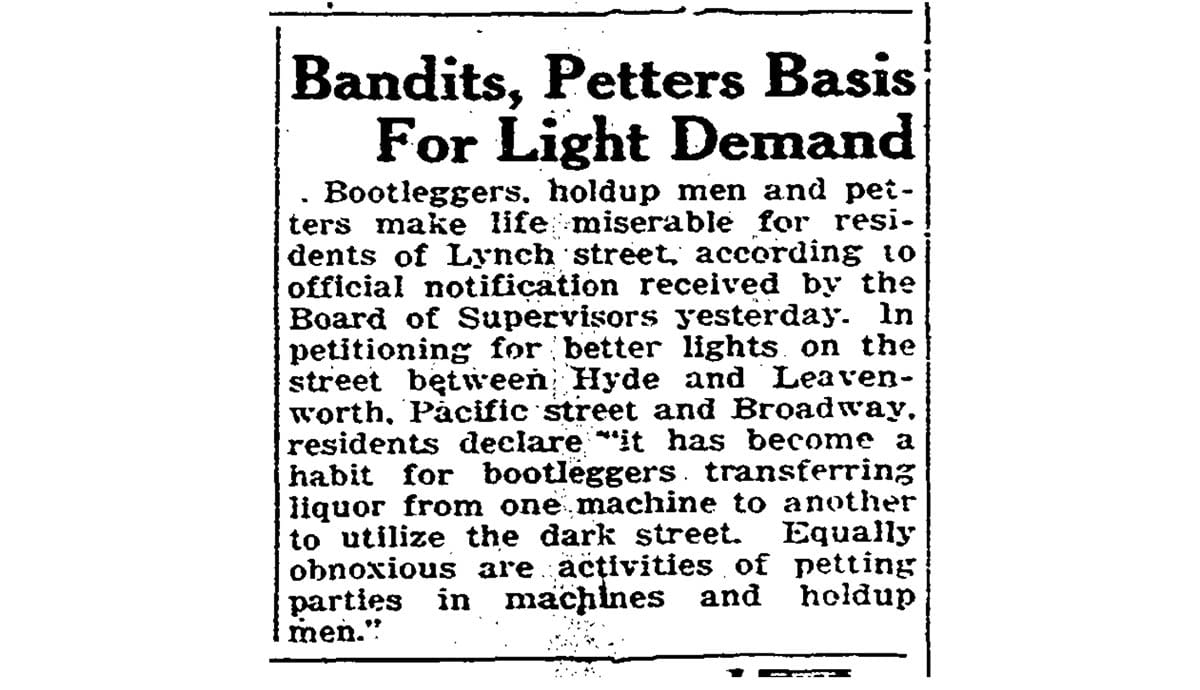
Bootleggers, petting parties, holdup men, and then the next year someone plays shuffle board on the hill with a house… how much worse can a tunnel be?

After construction delays and almost four years of work, the Broadway Tunnel opened with a ribbon cutting, a speech from mayor Elmer Robinson, and a parade of limos, Muni buses, and fire trucks on December 21, 1952.
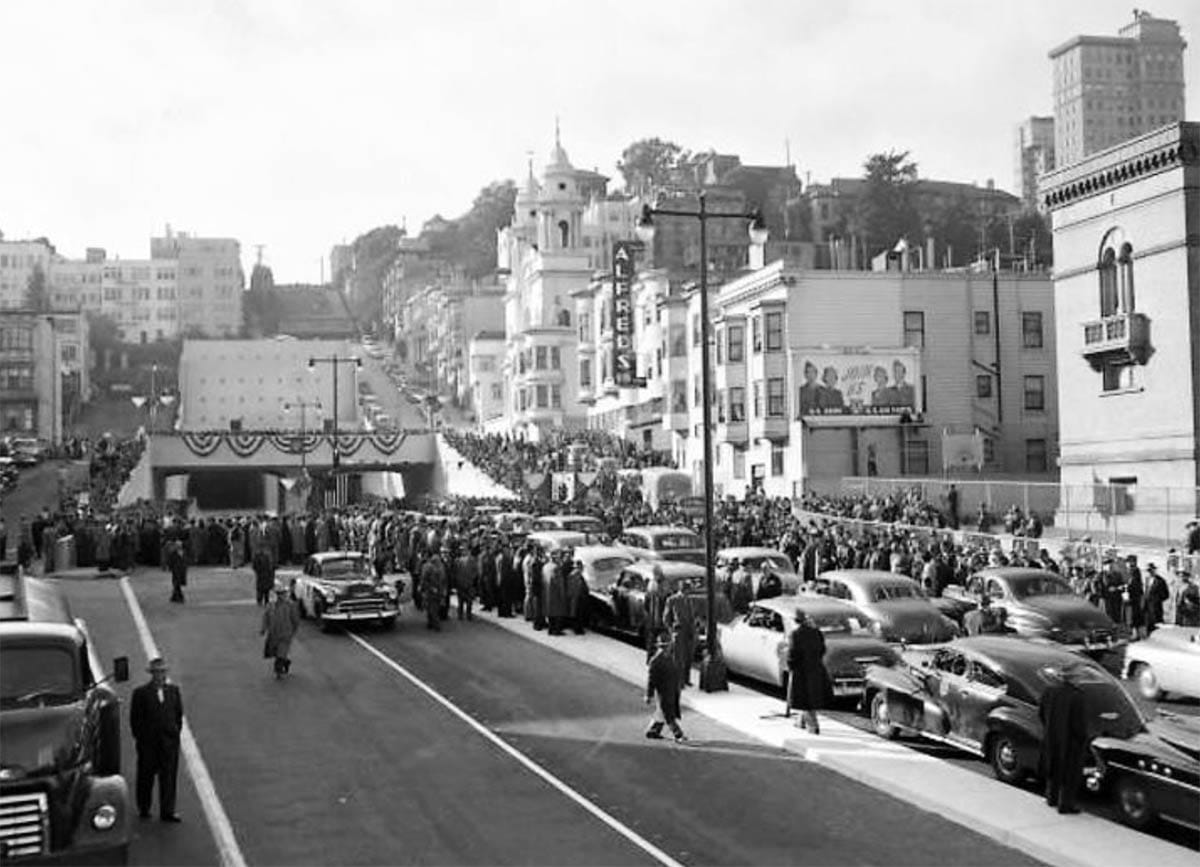
“This tunnel is designed to aid and assist in solving the traffic hazards and problems that have come with the growth of our city,” said the mayor.
Five thousand people showed up and there was an immediate traffic jam.
Woody Beer and Coffee Fund
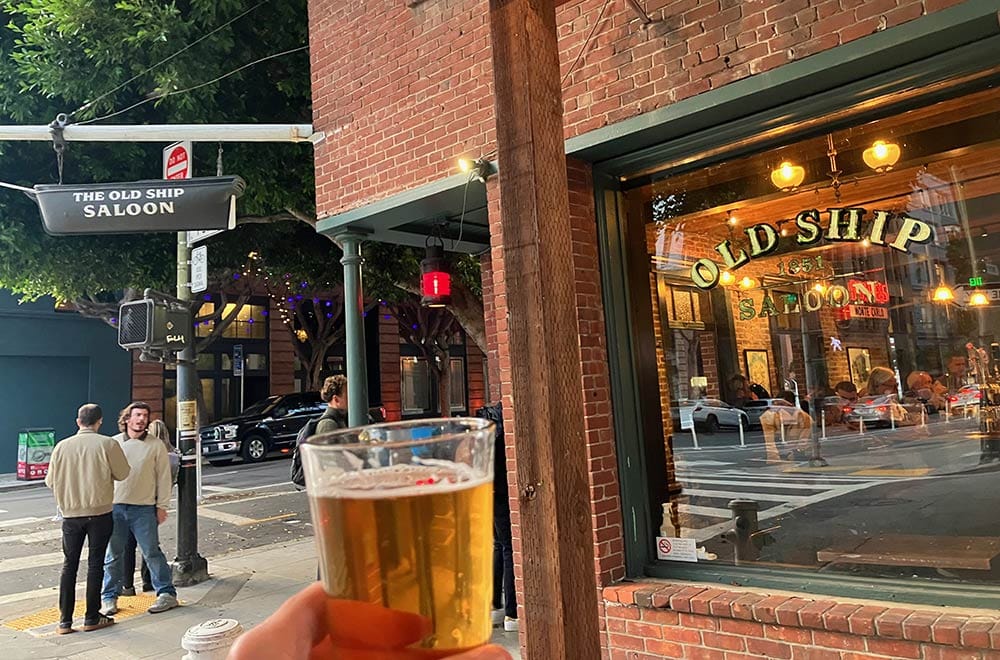
Great thanks to KP and Karen P. (F.O.W.) for contributing to the never-ending quest to make me sociable and keep me hydrated. I have at least three meet-ups this week to spend down some of the fund on libations and conversation. When are you free?
Sources
“Broadway Tunnel,” San Francisco Chronicle, February 12, 1874, pg. 3.
C. F. Adams, “Fillmore Street Tunnel Necessary for Access to Harbor View,” San Francisco Call, August 26, 1911, pg. 17.
“Bandits, Petters Basis for Light Demand,” San Francisco Chronicle, March 13, 1927, pg. 57.
“Run-Away House Wrecks 2 Autos; Comes out Whole,” Redwood City Tribune (A.P.), February 9, 1928, pg. 5.
“Broadway Tunnel Opens,” San Francisco Chronicle, December 22, 1952, pg. 1.
“Ships Under Financial District,” FoundSF.org

